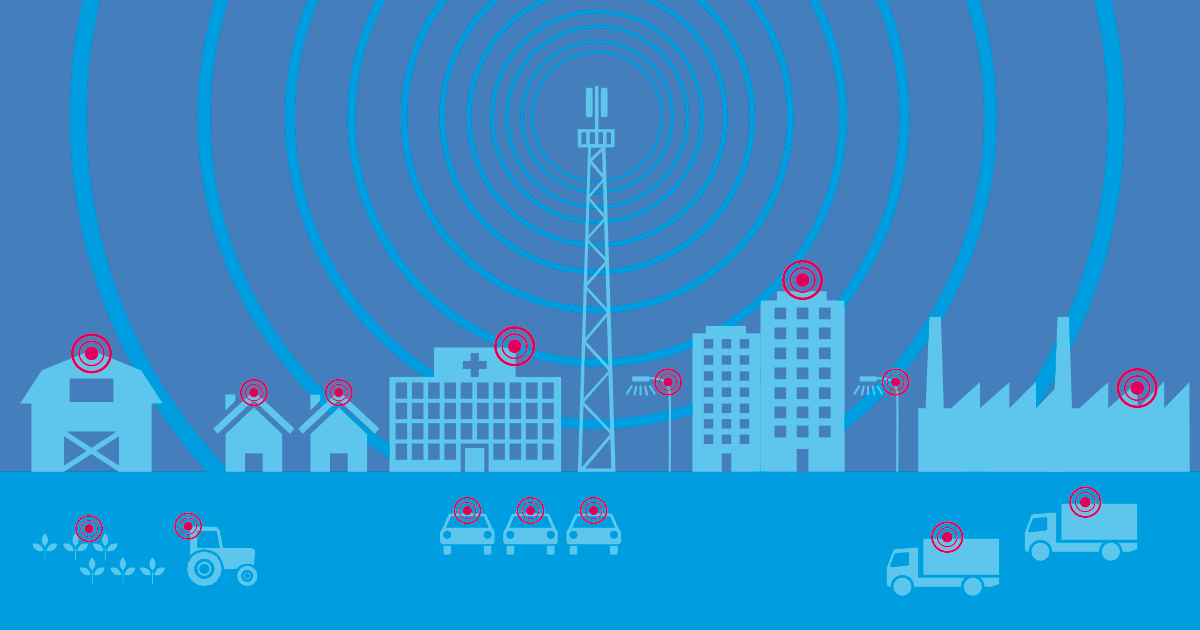Wireless communication for low-power, long range Internet of Things (IoT devices) has been revolutionized by LPWA LPWAN technologies across industries from smart cities to smart agriculture. These LPWA networks address a key IoT connectivity challenge: enabling wireless network communication that reliably covers a few to several long-distance kilometers while lasting years on battery life.
LPWA Explained: Defining Low-Power Wide-Area Networks
Low power wide area Networks (LPWA LPWAN technologies) are wireless technologies optimized for connected devices and IoT applications that need to send small amounts of data over long-distance connections while using very little power. Unlike cellular networks, Wi-Fi, and Bluetooth which can consume significant energy, these low power wide area networks can keep IoT devices running for 5–10 years on a single battery while also communicating over 2–40 kilometers. Read more ...
How LPWA LPWAN Technologies Work
These network technologies focus on using specific radio frequencies and modulation types optimized for:
-
Range over speed: Sacrifice high data rates to achieve long range
-
Ultra-low power consumption: Optimized to last for years on a single battery
-
Deep penetration: Signals reach indoor and underground locations
-
Low-cost: Cheaper infrastructure than traditional cellular technologies
This makes them the perfect fit for IoT solutions and use cases where connected devices have to transmit small amounts of data occasionally with low latency requirements, e.g. smart meters, sensor values, device status, or asset tracking information.
Multiple cellular LPWA and wireless communication technologies fall under the LPWA LPWAN umbrella, all designed for low power consumption while providing wide area networks that cover distances of many kilometers through base stations and gateways. They allow IoT devices and modules to send small bits of data through low-bandwidth data transfer, such as sensor readings, status updates, or location information, over long distances while still providing years of battery life. This scalability makes them useful for real-time monitoring in IoT applications such as smart agriculture, smart cities, industrial IoT, healthcare, and automation.
LPWA LPWAN Technologies: Sigfox, LoRa, and NB-IoT
Sigfox Explained: Global LPWA Network Technology
Sigfox pioneered commercial LPWA markets with ultra-narrow band (UNB) technology. Founded in 2009, the French company provides global IoT networks coverage across 45+ countries through local operator partnerships and endpoint connectivity.
Sigfox features:
-
Ultra-narrow band radio for maximum range (up to 40km rural)
-
Extremely low power consumption (10+ year battery life)
-
Simple device integration with minimal hardware
-
Global coverage through operator networks
LoRa/LoRaWAN Technology
LoRa (supported by the LoRa Alliance) offers private wireless network deployment capabilities using chirp spread spectrum modulation. This technology provides greater data rates flexibility and throughput than Sigfox while maintaining excellent power efficiency.
LoRa advantages:
-
Private network control
-
Moderate data rates (300 bps - 50 kbps)
-
Enterprise-friendly deployment
-
Range up to 15km rural, 5km urban areas
NB-IoT (Narrowband IoT)
Narrowband IoT (NB-IoT) operates on licensed cellular spectrum through LTE networks, providing carrier-grade reliability and security. This cellular IoT and cellular LPWA solution integrates with existing LTE Cat infrastructure and 3GPP standards.
NB-IoT benefits:
-
Cellular networks reliability
-
Higher data rates (20-250 kbps)
-
Licensed spectrum operation
-
Urban areas coverage optimization
LPWA Use Cases: Where Low-Power Networks Excel
Smart Cities:
-
Street lighting management and environmental monitoring
-
Waste management optimization and parking solutions
- Smart home integration and urban areas connectivity
Agriculture:
-
Soil moisture monitoring and livestock asset tracking
-
Weather stations and crop condition analysis through large-scale deployments
Industrial Applications:
-
Asset tracking and equipment monitoring modules
-
Supply chain visibility and remote surveillance with LTE-M integration
LPWA LPWAN Network History: Older Than You Think
The origins of LPWA LPWAN technology trace back to radio communications developed during World War I. Armies implemented low-power, long-range radio to enable reliable communication across battlefields. The WWI Narrow Band Evaluation showed that even with less data speed, longer range and power savings can address communications problems - a principle that is at the core of today's LPWA.
Monitoring LPWA LPWAN Technologies with PRTG
Network monitoring will help maintain and optimize LPWA performance. PRTG offers complete IoT monitoring solutions with sensors specifically tailored for low-power networks.
PRTG can help with LPWA monitoring:
-
HTTP IoT Push Data Advanced sensor monitors Sigfox devices and IoT endpoints
-
Real-time connectivity status across all connected devices in LPWA networks
-
Automated alerting for device failures or communication issues
-
Battery life monitoring to prevent unexpected outages
-
Centralized dashboard for complete network visibility and LoRaWAN gateway management
Need to monitor your LPWA LPWAN? Even low-power networks need to be monitored in order to have end-to-end visibility that all devices are connected and transmitting data as expected, and so that you can handle battery replacement before they deplete.
LPWA Security and Implementation Considerations
These wireless technologies face unique security challenges due to their simplified protocols and long device lifecycles. Organizations should implement:
-
End-to-end encryption for data transmission
-
Device authentication and secure onboarding
-
Regular security updates where technically feasible
-
Network access controls and monitoring
Choosing the Right LPWA Technology
LPWA LPWAN technologies offer proven solutions for large-scale IoT connectivity. Choose Sigfox for global deployments with simple sensors, LoRa for private enterprise networks, or NB-IoT for mission-critical urban applications.
Ready to monitor your LPWA infrastructure?
PRTG's specialized IoT sensors provide complete visibility into Sigfox, LoRa, and NB-IoT networks.
👉 Download your free 30-day trial and optimize your low-power network performance.
 Published by
Published by 




.jpg)






